This crunchy and toasty Sautéed Yam absorbs the flavors from soy sauce being charred in the pan. Inspired by the Japanese drama, Midnight Diner.
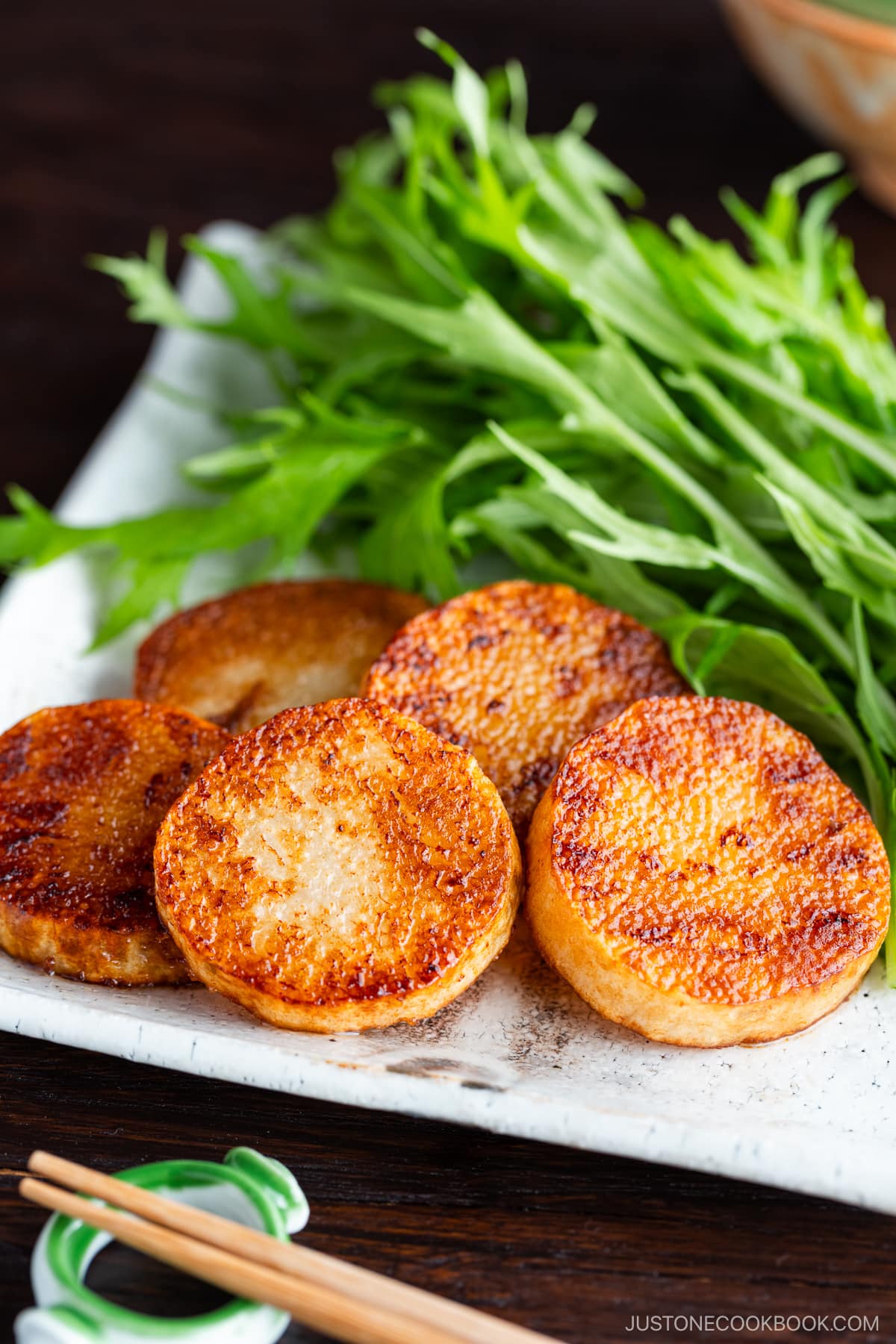
Have you tried Sautéed Yam before? The recipe was featured on the popular Japanese TV program called Shinya Shokudo (深夜食堂) or ’Midnight Diner: Tokyo Stories‘ now available on Netflix. The show features Japanese dishes that are more representative of home-cooked recipes than Japanese Restaurant menu items in the US.
Since the drama doesn’t provide detailed ingredients and step by step instructions, I started to share these copycat recipes on my blog. Today’s recipe – sautéed yam (長芋のソテー) was featured in Season 1, Episode 8.
What is Nagaimo?
First thing first. You probably wonder what type of yam is being used in this recipe. It is not the sweet potato “yam” you might be thinking of. If you’re not sure what’s the difference between a yam and a sweet potato, this article might be helpful. So this particular yam used in this recipe is called Nagaimo (長芋) and it looks like this.
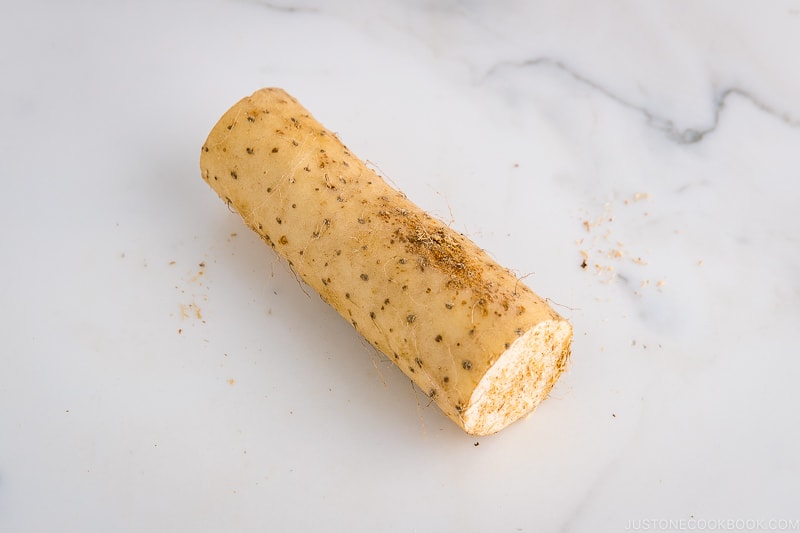
Sounds or looks familiar? You might have researched this ingredient for Okonomiyaki recipe because grated nagaimo in the Okonomiyaki batter is important for the fluffy texture. Also, if you have traveled in Japan, you might have tried Tororo Gohan (とろろご飯). That white gooey and slimy thing on top of rice, that’s also grated nagaimo.
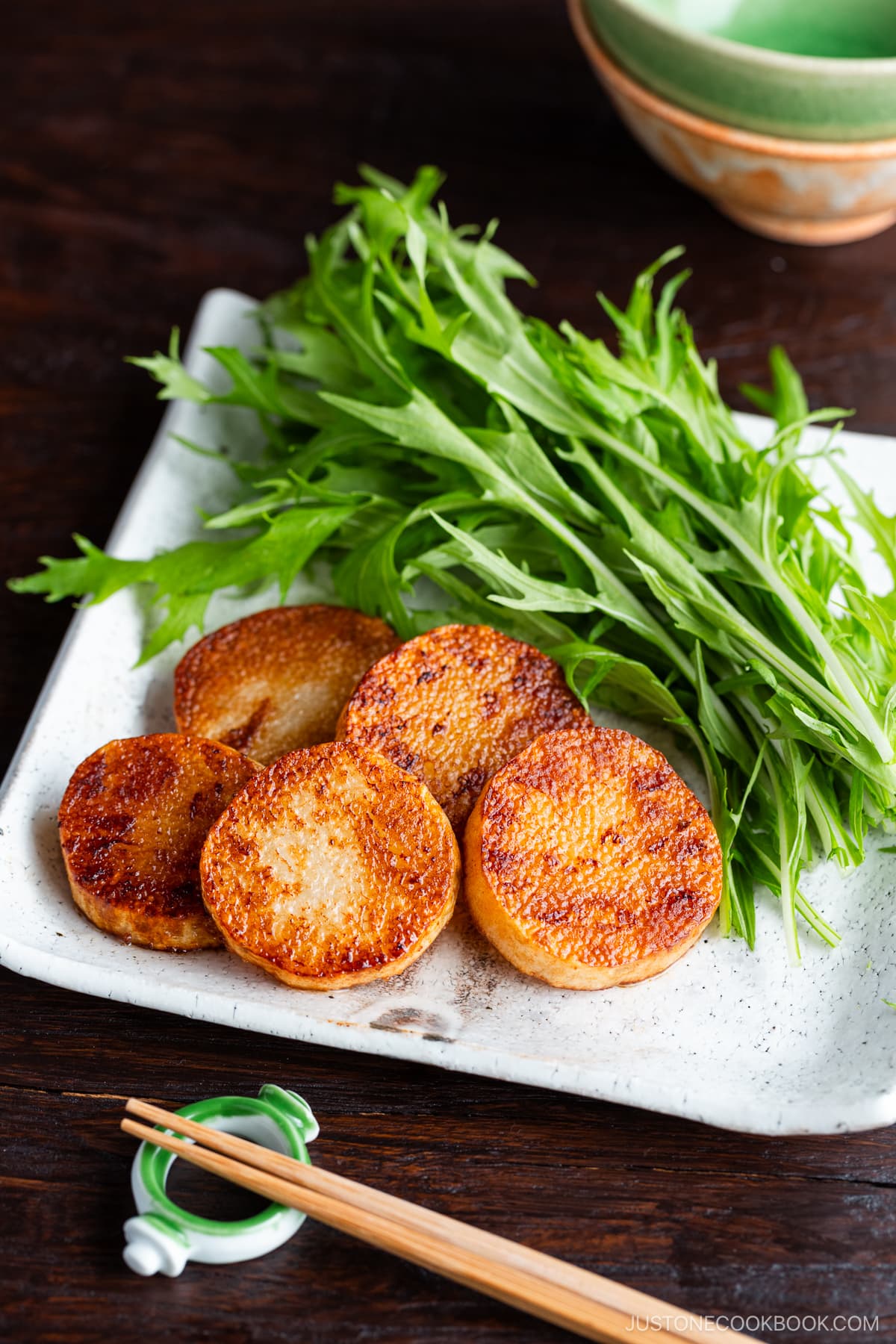
Why You Should Try This Recipe
To be honest, I was quite surprised at how delicious this simple dish was. If it wasn’t for Midnight Diner inspiring me to recreate the recipes from the show, I probably wouldn’t have come up with a dish like this using nagaimo. I used to only buy nagaimo for making Okonomiyaki and hadn’t made any other nagaimo recipes that my mom used to make for us when growing up. In short, I’m not a fan of nagaimo by itself.
So, this dish was a total surprise for me (in a good way). I want to emphasize that if you look at the ingredient list, you see only four ingredients. Besides nagaimo, you only use olive oil, salt, and soy sauce. I was delighted and totally awed by the deliciousness of this dish with my not-so-favorite nagaimo.
I think the key “yum” factors come from 3 parts: 1) a nice crunchiness from nagaimo, 2) burnt/charred soy sauce flavors, and 3) the right amount of saltiness that brings bland nagaimo to the next level.
I know it’s hard to convince people to enjoy nagaimo, so I pray that my photographs of this simple dish did it justice. The lighting on this day was perfect so I am really happy with the way the pictures turned out. I hope that these sauteed yam looks delicious enough for you to give it a try!
Can’t Find Nagaimo?
Lastly, if you can’t get nagaimo where you live, it’s really difficult to substitute ingredients for it. I cannot recommend using potatoes or other root vegetables as a replacement. Nagaimo cooks very quickly compared to other thick root vegetables and has a unique texture unlike anything else.
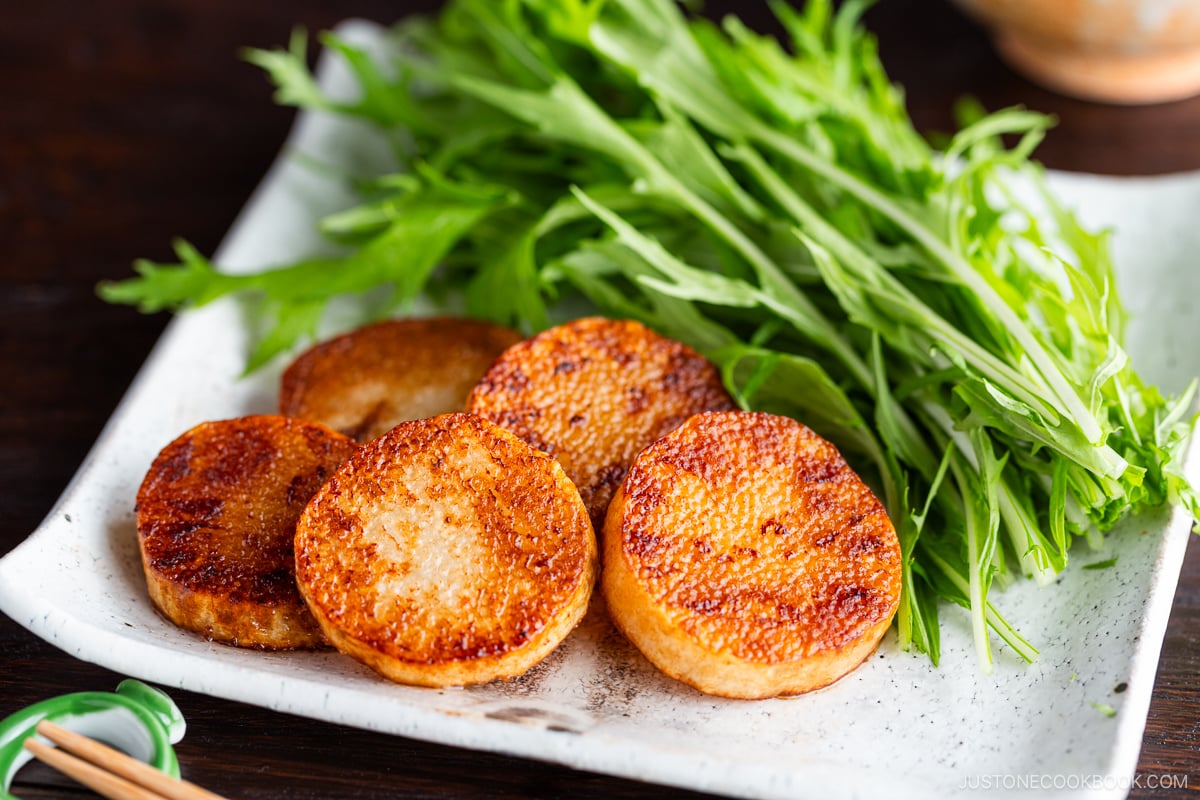
Wish to learn more about Japanese cooking? Sign up for our free newsletter to receive cooking tips & recipe updates! And stay in touch with me on Facebook, Pinterest, YouTube, and Instagram.
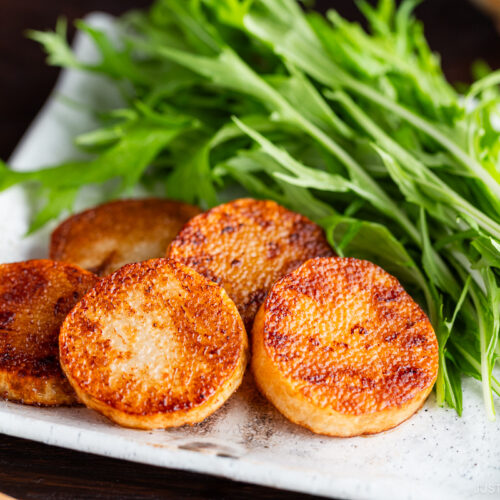
Sauteed Yam
Ingredients
- 2½ inches nagaimo/yamaimo (mountain yam)
- 1 Tbsp extra virgin olive oil
- ⅛ tsp Diamond Crystal kosher salt
- 2 tsp soy sauce
- mizuna (Japanese mustard green) (for serving; optional)
Instructions
- Gather all the ingredients.

- Peel and slice 2½ inches nagaimo/yamaimo (mountain yam) ½ inch (1.3 cm) thick. Some of you may feel itchy by touching nagaimo. If you‘re not sure, wear kitchen gloves to protect your skin. Once you peel, nagaimo gets very slimy, so be careful.

- Heat 1 Tbsp extra virgin olive oil in a large frying pan and sprinkle ⅛ tsp Diamond Crystal kosher salt.

- Put the nagaimo slices in the pan and sauté for 3–4 minutes on medium heat. When it has a nice char on the bottom, flip and cook for another 3–4 minutes.

- Add 2 tsp soy sauce. Quickly lift up the frying pan and swirl the nagaimo in the frying pan so that the nagaimo will be evenly coated with soy sauce. Moving around the nagaimo prevents it from getting burnt. It might splatter a little bit, so be careful. This creates delicious flavors.

- When the sauce gets thicken and the nagaimo has a nice char, turn off the heat and serve. Just like in the Midnight Diner episode, I serve this dish with mizuna (Japanese mustard green).

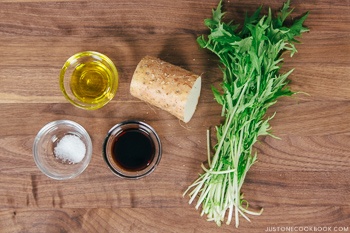
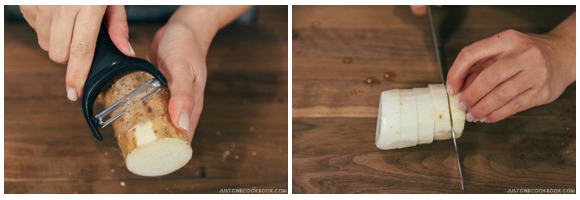
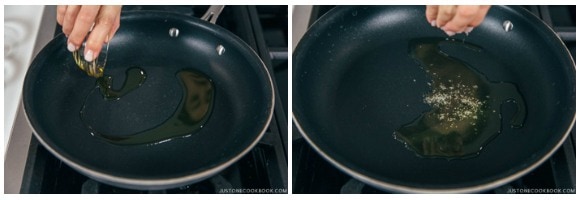
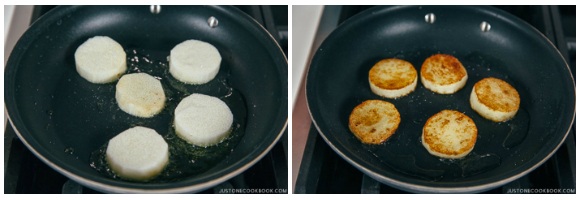



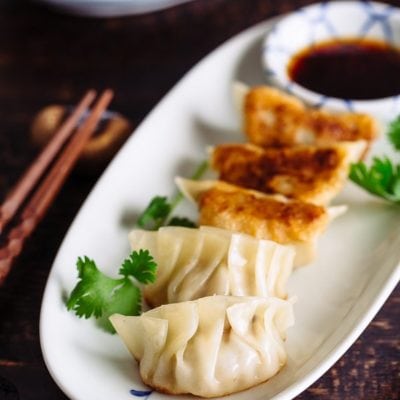
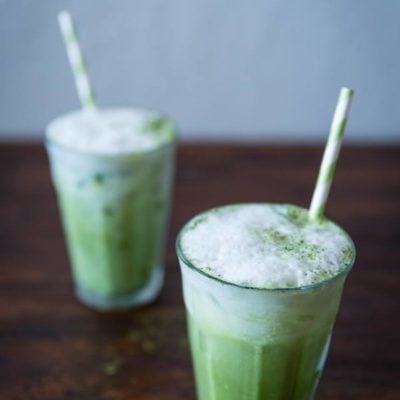


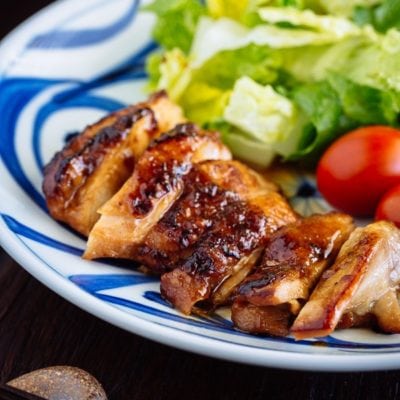
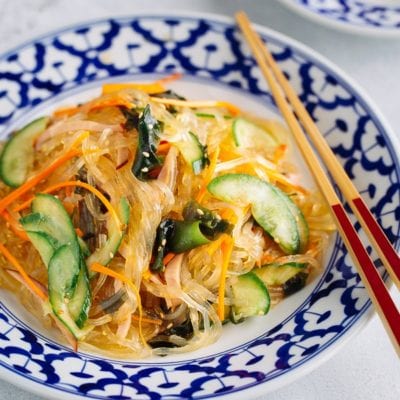

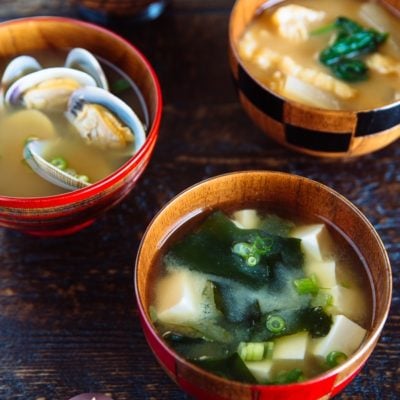


I am going to make this this week! I can’t get mizuna where I live (though I am growing some for later in the summer) so I had to look up substitutes, because for me, eating the warm yams with some crisp greens sounds like a great pairing. I saw a website that recommended tatsoi or arugula and I think these are both very good suggestions that both pair well with Asian flavors with their mildly spicy flavor. I’ve used arugula in hot pot and ramen before and it was delicious.
Hi Lion! Hope you enjoy! Yeah arugula may work for the texture if the flavor is not too strong for you (mizuna is more subtle). I used mizuna and tried to resemble the dish from “Midnight Diner”. 🙂
[…] With leftover, you can make this quick and easy Sauteed Yam! […]
This recipe is AMAZING. Love the show. Rewatched this episode while eating the yam! Simple recipe but the flavor is stunning. I wore gloves to peel the yams. Thank you so much!
Hi Alexandra! Hahaha, that’s actually a great idea! I should make this midnight dinner dish to watch the same episode so we won’t be hungry! LOL. Thanks so much for your kind feedback. xo
I like very much to eat Nagano but this is the first time I have tried this recipe and it is very good I enjoy cooking Japanese food I find it very healthy using little or no oil while cooking thank you Nami I try to follow your recipes
Hi Allen! I’m so happy to hear you enjoyed this recipe! Thank you for trying it and for your kind feedback. 🙂 xo
Excellent!! Thank you.
Thank you for the kind words, Alexandra! 🙂
[…] Episode 8 – Sauteed Yam 長芋のソテー […]
Hi Nami! I binge watched the first season of Midnight Diner just recently! Thank you for introducing the series! I just made the Sautéed Nagaimo and we love it! My apologies as I forgot to take a picture before it was inhaled! So easy and, yet, so good! Thank you!
Hi Pat! Wonderful! I’m so happy to hear that you enjoyed both the drama and this dish! I’m so glad that I have one recipe that’s easy to make with nagaimo after I buy it for making Okonomiyaki. No more waste. Just sautee! 🙂
Hi Nami,
Thanks for recommending Midnight Dinner, love every bit of the series. Hope there is more to come.
I love the recipe you have posted about this sauteed yam recipe. Love Love Love it. So delicious
I have made it twice. Each time my arm will break out in rashes and it itched really, had to shower immediately. I wore gloves both times.
Wondering if you have heard of any nagaimo allergies while peeling it? I can peel taro no issues, I know some people have similar reaction when peeling taro.
I would hate to give up this dish as I can’t even find it in any Japanese restaurants in Chicago.
Any suggestions?
Hi Sandrine! I’m happy to hear you like the drama too. I also hope that they will share 2 more seasons… I think this drama does well and it’s too sad if they don’t continue with another season.
In Japan there is nagaimo/yamaimo allergy too. I googled to check and found out that there are not too many people with this allergy, so it’s not necessary for the company to put a allergy level on products etc (yet).
The doctors recommend wearing gloves (but have to be careful when grinding as it gets slippery) and washing in hot water when you get itchy.
Anyone have any advice for making sure they don’t stick? I did them in a stainless steel sautee pan and couldn’t get them to flip without tearing the bottoms off, even after deglazing. Is there anything to be done aside from using a non-stick pan?
Hi Ian! Oh no, sorry to hear that. You might know already, but just in case you didn’t, to use a stainless steel saute pan, you have to make sure the frying pan is nice and hot before food is added, and plenty of oil is necessary so the food doesn’t stick. Some protein like chicken or scallope etc releases itself once the bottom is cooked (easy to flip), but nagaimo is sticky…. so I’m not too sure if you can flip even after the bottom is brown. You just need generous amount of oil that nagaimo will move around without sticking (almost like shallow fry).
Hi, thanks for these nice recipe 🙂 Can we eat it also cold, for example in Bento? I like it to eat Yams 🙂
HI Katrin! I’d definitely include it in bento. However, it won’t be tasty as it is like right after you cook. It stays crunchy and tender though.
I followed your receipe closely and find it too salty for my liking. So i added fresh basil and parika powder to cover the saltimess. Much better to my liking. Still cruncy. Very special receipe. 🙂
Hi Iris! Thanks for trying this recipe! It should be just a drizzle of soy sauce. Next time try reducing soy sauce more. 🙂 Thank you for trying this recipe!
This was delicious! I too had leftover nagaimo from okonomiyaki– I was trying to figure out a use for this, and this recipe was the ticket! Once cooked, the texture is perfect and the
Simple salt/char/shoyu flavor was beyond delicious. This recipe is 10/10. I now know how I will use my leftover nagaimo (after okonomiyaki night)!!
Hi Keri! I’m so happy to hear you enjoyed this dish. Yes, we don’t have to worry about the leftover Nagaimo anymore with this dish. 🙂 So easy, right? I love the texture too. Thank you for your generous score. =)
Thanks for the recipe! I’ve only had grated yamaimo before, so I was surprised at how hearty and delicious this tasted sautéed. Honestly, this is high on my list of favorite vegetable dishes. The only difficulty I had was, I used a cast iron pan so the slices stuck to the pan if I didn’t keep them constantly moving.
.
Hi Jay! So happy to hear you liked the recipe! Yeah cast iron might stick, unless you put more oil. Thank you for your kind feedback. 🙂
I have been addicted to this lately! I was so excited the other week at my Asian supermarket because thanks to you I was not only able to recognise nagaimo when I saw it but I also immediately knew what to do with it! Haha. It’s true that they have a unique texture. I was a bit naughty and added a little butter to the pan just as they were finishing off – so delicious! Should there still be some crunch in them though or cooked all the way through? I’ve tried both ways but wasn’t sure which was the ‘ideal’ manner of serving. Many thanks.
Hi JJ! Hahaha! I’m very proud of you! 😀 It should have crunch in them, as you can eat it raw too. I like a bit crunchy. Soy sauce and butter is awesome combination and we have a lot of soy butter flavor in our dishes. So you did the good thing to Nagaimo. 🙂 Glad to hear you enjoy this dish!
In my part of the woods nagaimo is literally unknown, therefore, I will have to Google it 🙂
Hi Audrius! Hope you can find it! 🙂
I really enjoyed this recipe. My parents give us Naigamo every summer that we use in soups, but we always have excess. This recipe gave us a delicious and novel way of making Naigamo. I will be using it again.
Hi Grace! Thank you so much for trying out my recipes! Yeah we never used up entire nagaimo for dishes (I usually use some for Okonomiyaki and it was hard to think of a way to use the rest). However, thanks to Midnight Diner recipe, I’ve been making this as a side dish! It’s so perfect! Thank you for trying my recipes!